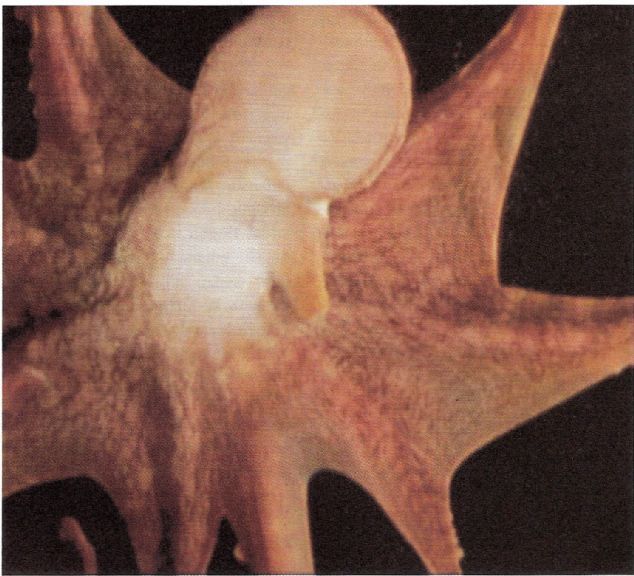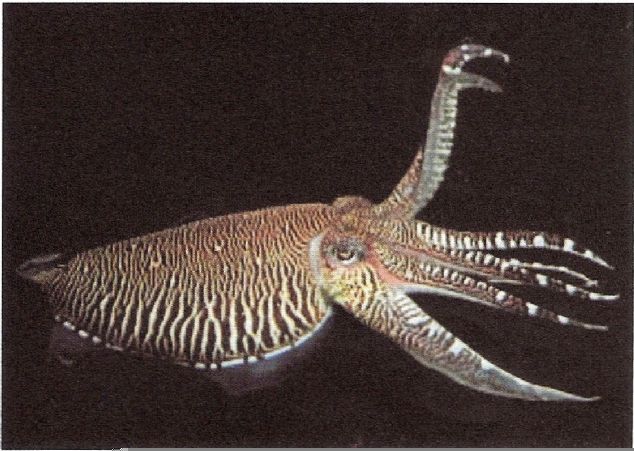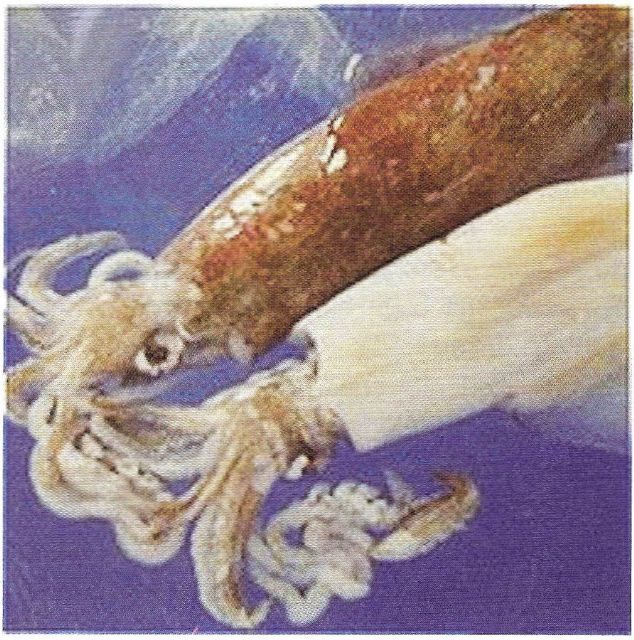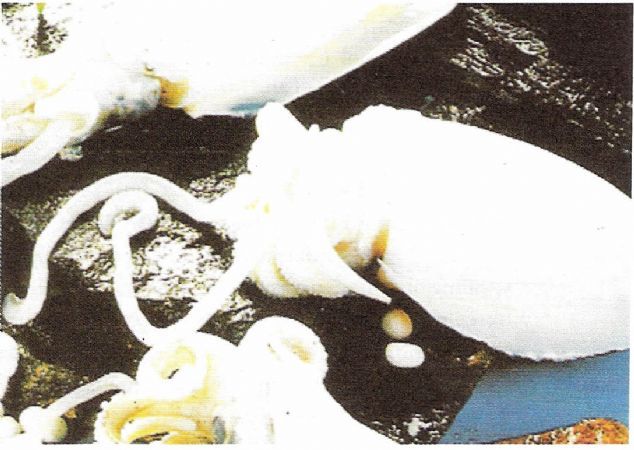
|
 |
Kitaplar » AQUACULTURE » Octopus and Squid Farming Picture: Octopuses attract attention among marine creatures with their interesting body structures. Due to the taste and commercial importance of its meat, it has an important place in fisheries. OCTOPUS AND SQUID FARMING OCTOPUS BREEDING Octopus, squid and squid farming has attracted the attention of many people until today. Studies on this subject are quite new and limited. Studies indicate that breeding efforts on these issues will increase in the future. Because positive results are obtained from the studies on this subject. For example, some octopus species can easily adapt to the environment and can be fed frozen food. The fact that the products obtained through the fattening study can be marketed at high prices in the market indicates that the interest in breeding will increase. Successful results have been obtained in growing octopus from eggs. Most of the studies were carried out under laboratory conditions. The giant octopus (Octopus dofleini) is a commercially important species and weighs 20-25 kg. Apart from such large species, there are also octopus species weighing 2-3 grams. It is even known that there are much larger species in the depths of the oceans. Octopuses attract people's attention because of their structure. As a result of the display of octopuses, especially in marine aquariums, various information has been obtained about these creatures. Even 40-50 years ago, while it was a skill to catch and display octopus in marine aquariums, many octopus species can be kept at hand in famous aquariums of the world. The studies conducted here are useful in understanding the feed intake and development of octopuses. Marine aquariums are places that attract the attention of the public and exhibit living things. At the same time, when the creatures to be studied come to the agenda, they are of great importance for the scientific world as the facilities where the first researches are handled. It is a pity that large aquariums have not yet been opened in our country. While there are many seaside cities, it is admirable to establish a large aquarium in Gaziantep by the Municipality. Due to its economic value in Mediterranean and Asian countries, extensive studies are carried out on octopus and squid in the Spanish oceanography institute. The most important problem in these studies has been the rearing of young larvae. Broader studies should be carried out on egg retrieval, especially from broodstock kept. The above mentioned institute of oceanography is located in Vigo, Spain. In this institute, positive results have been obtained from the fattening trials on octopuses collected from the nature. Scientific accumulation to start the breeding stage has not yet been reached. For one year, octopuses were fed 80% crustacea, 20% fish and frozen crustaceans. In order to be able to observe the females reserved for production more easily, the bottom of the PVC boxes is open and a lid is placed on the top. Sexually mature octopuses were placed so that a female and a male coincided. During the studies, the relationship between the embryonic development time of each female, especially the number of eggs and the length of the female, was investigated when the ovulation period started. Around 20,000 paralarvas were placed in tanks with a capacity of 2,000 liters. In the closed circuit system, one fourth of the total water volume is renewed every four hours and the water temperature is kept constant around 18 to 20 degrees. Feeding was carried out by adding micro-sized algae and seaweed to the tanks. In addition, Artemia naupli feed was given as of the first week. In the controlled production, octopuses in the Paralarva period were constantly monitored. It takes 4 months for octopuses to reach their commercial sales length of 300 grams. Octopus larvae are thought to adopt a planktonic lifestyle. Octopus species living in the oceans are from the cephalopod molluscs that live in the bottom. More than half of the known species are creatures that breed from eggs, feed on plankton, and can swim with a jet propulsion-like ability. Even today, the swimming behavior before settling in a region and the time spent in the development period are among the topics of discussion. In the advanced stages, plankton are very few in terms of species. Since there is no option to use statoliths or other methods used to determine the age of octopuses, it is difficult to determine the age of octopuses caught from nature. Until now, few studies have been successful in placing octopuses in a certain area and monitoring their development. During a trial, the Octopus vulgaris form, a species seen in the North-western Pacific Ocean, was successfully survived for up to 33-43 days. During the summer, offspring from the Mediterranean form (O.oulgarisoes) could be taken in the North West Mediterranean coasts, where the water temperature is 21.1 degrees. Individuals measured on the first day had a maximum length of 2.9 mm and a weight of 1.4 mg, and they each carried short arms with three suction cups. This species develops in a very short time (8.5 days) and reaches almost twice its weight. When it reaches the 60th day, this rate comes up to 125 times. Although the number of eggs taken from each female is 1-5x105, the mortality rate in the planktonic period is said to be high. These short-lived species have a very high capacity in terms of dispersal during their youth, which is a very critical phase. When their swimming styles are examined, they can move backwards with jet speed compared to other directions. It is known that they gained this swimming style on the 30th day when their growth rate reached the highest level. They are protected from plankton nets and other creatures that threaten their species thanks to their retreat capabilities. In the second phase of their planktonic life, arms start to lengthen disproportionately. This period is the time of transformation from the squid appearance to the benthic octopus appearance. It is understood that it will take time, in the light of today's knowledge, to bring octopuses to breeding conditions. The purpose of addressing the subject in this book is to answer some questions on this subject.
 Picture: Cuttlefish (Sepia pharaonis) CUTTLEFISH AND SQUID BREEDING Various studies have been conducted on squid and cuttlefish farming in Taiwan since 1978. To date, although 11 species found in the seas have been studied, they have focused on the production of three species. (Sepioteuthis lessoniana, Sepiella inermis, Sepia pbaraonis) Since 1990, over 2 million cubs of squid have been released into the sea. Most of the studies conducted have been on the biology, behavior and water conditions of the mentioned species. As a result of the researches, although cephalopods have a very short lifespan, positive information has been obtained in terms of growth rate, fertility ability and hatching rate. When cephalopod breeding is desired, eggs are collected from traps prepared for cuttlefish. Because when other hunting methods are used, egg quality can be low. In studies conducted on Septella inermis, it was observed that no offspring were hatched from the eggs at a salinity of 10-15%. It was observed that offspring could be obtained at 20-35% salinity. It was stated that there was no difference in hatching between the groups. The ways in which cuttlefish lay eggs differ according to the species. European cuttlefish (Sepia officinalis) is a species that is bred in closed production units, especially for medical experiments. It is widespread from the Atlantic coast to the Mediterranean and African coasts. It lives at 32-35% salinity at 15-27 degrees. Ideal production temperature is 21 degrees. Depending on the water temperature, it reaches sexual maturity in 6-16 months.
If the egg-laying habits and shapes of the species are known while providing eggs from nature, the collection process will be safer. Some of them can lay eggs in clusters and others in rows. Others lay eggs scattered.
Taking offspring from the eggs is as follows: A good ventilation system is prepared in the incubator tanks. Plastic baskets are placed in which the eggs can be opened. Temperature is constantly monitored and sudden temperature drops are not allowed. Against the algae problem, the light intensity is kept low or a shadow is definitely provided with a curtain. If the water temperature is 280 degrees, the incubation period for Cuttlefish eggs will be 2 weeks. 3 weeks is sufficient for large finned squid. The hatching rate is usually greater than 90% for all species. The large-fin squid newly hatched leads to planktonic life. Adults, on the other hand, experience a nectonic (free floating) period. Both juveniles and adults of the (Pharaoh) squid are benthic-living. The (spirieless) cuttlefish experience a planktonic period of 3 days after hatching. It passes into benthic life in adulthood. As can be seen, different species have different life habits. The newly hatched larvae are fed with Artemia. For this reason, shrimp larvae and many other feeds have been tried. Studies on feeding are expected to continue. After 20 days, young cephalopods are fed finely chopped and crushed fresh fish meat. It is necessary to perform grading every ten days, otherwise the problem of cannibalism is encountered. The density should be reduced by 25% after each grading process. Optimum density is 5-10 units / lt for squids and 500 individuals per square meter for cuttlefish. The water change rate should be 1 liter per minute within the first 30 days. Thus, the harmful factors created by the feed residue and the ammonia values accumulated in the water are significantly reduced. And it can be kept under control. Adult cephalopods need good quality water conditions. For this reason, living places should be created as close to their natural environment as possible. Floating net cages are suitable for the pelagic stages of squid. In choosing the place where breeding will be done, attention should be paid to good water exchange, low turbidity and high salinity. If these criteria are given importance, successful results will be obtained. On the other hand, individual density should be kept at optimum 1O / m3 during 3-4 months, which is the growth and development period.
 Picture: Squid (Sepioteuthis lessoniana)
Large finned squid are stocked as 5-10 pieces / meter individuals in 5 m2 floating net cages. Small sliced fish can be used as food. However, feeding should be done at least twice a day, in the morning and evening. Production reaches 500-1000 grams per m2 in 3 months. When the cuttlefish are stocked at 10 / m2, they can adapt to the conditions of the pond easily and earlier. Because they have a benthic lifestyle and they can tolerate a little more low quality water conditions than the other two species. It reaches 100 gr m2 within two months. Large finned squid reaches the adult stage in two months and reach sexual maturity in 3-4 months. Mating and ovulation begins after a week. The life span of these two species lasts about 4-5 months. Pharaoch squid has a life span of 8 months. The maximum weight reached by all three species respectively; large fin ink (600 gr.), spineless (800 gr), pharaoh 0000 gr. The males of these three species, whose cultural studies are being carried out, are larger than the females. They are also more in number than females. Water conditions needed by cephalopods: Dissolved Oxygen: 5 mg / lt Salinity: 25-35 ppt Temperature: 28-32oC pH: 7.0-8.5
Turbidity: Recommended as minimal as possible.
 Picture: The meat of squid and cuttlefish group creatures is whitish It is considered as a quality seafood.
Considering the aquaculture activities of cephalopods from a commercial and economic perspective, it is the most promising species among these three species mentioned above. Because they reach 400- 600 grams in a short period of four months. The feed utilization rate is 20%, and the survival rate reaches 20-30% after hatching. Eggs can be taken all year in their natural environment. Spineless cuttlefish ranks second. Its suitability to culture conditions makes this species one of the preferred species in aquaculture. Their survival has been determined by 90%. The percentage of utilization from feed is 30%. Since it is a benthic organism, it accepts all kinds of food. It reaches 50 grams in 4 months. Because it is not small, it can be found in grocery stores for less than others. Pharaoh cuttlefish takes 3rd place. It appears to have a lower growth rate compared to the other two types. However, since it can reach 1000 grams in 4 months, it can easily find buyers in the markets. Feed utilization capacity is higher than the other two species. The survival rate was determined to be 90%. Today, cephalopod breeding has not been fully implemented in terms of producing human food. Studies are still in the research phase. One of the most important factors restricting culture is feeding. Due to the searches for live food in specific sizes, visually different body shapes, movement style and features in skin structures, difficulties are encountered in aquaculture. In addition, since it is possible to hunt cheaply in the natural environment, the economic situation in its cultivation is seen as worthless for many countries. Their feed selectivity is higher in their young period compared to their adult period. Artemia nauplii is a popular food for many marine forms. Unfortunately, cephalopods cannot fully utilize this type of food at the larval stage. In fact, when newly born squid are fed with Artemia salina, they grow at low rates and their vitality decreases. Mysid shrimp are abundant in Taiwan's natural waters. The ability to use the captured larvae for feeding squid larvae is important in successfully breeding cephalopods in our country. Unfortunately, this shrimp species cannot be grown outside of its native waters, especially in laboratory conditions. This situation restricts cephalopod breeding. In short, some food groups are difficult to find when cultivating cephalopods. Often times it is more expensive than it is. This situation negatively affects the cultivation of cephalopods. In addition to its use as human food, cephalopods are used as research materials to find answers to biological and ecological analytical questions due to their life cycle. Besides, cephalopods are important experimental animals in experimental studies. Producers who produce and market them as experimental animals can put cephalopods into practice because they market their products expensive. They can be kept alive and feed in aquarium conditions. Aquaculture activities will continue in order to be handled in aquariums as a hobby.
|




